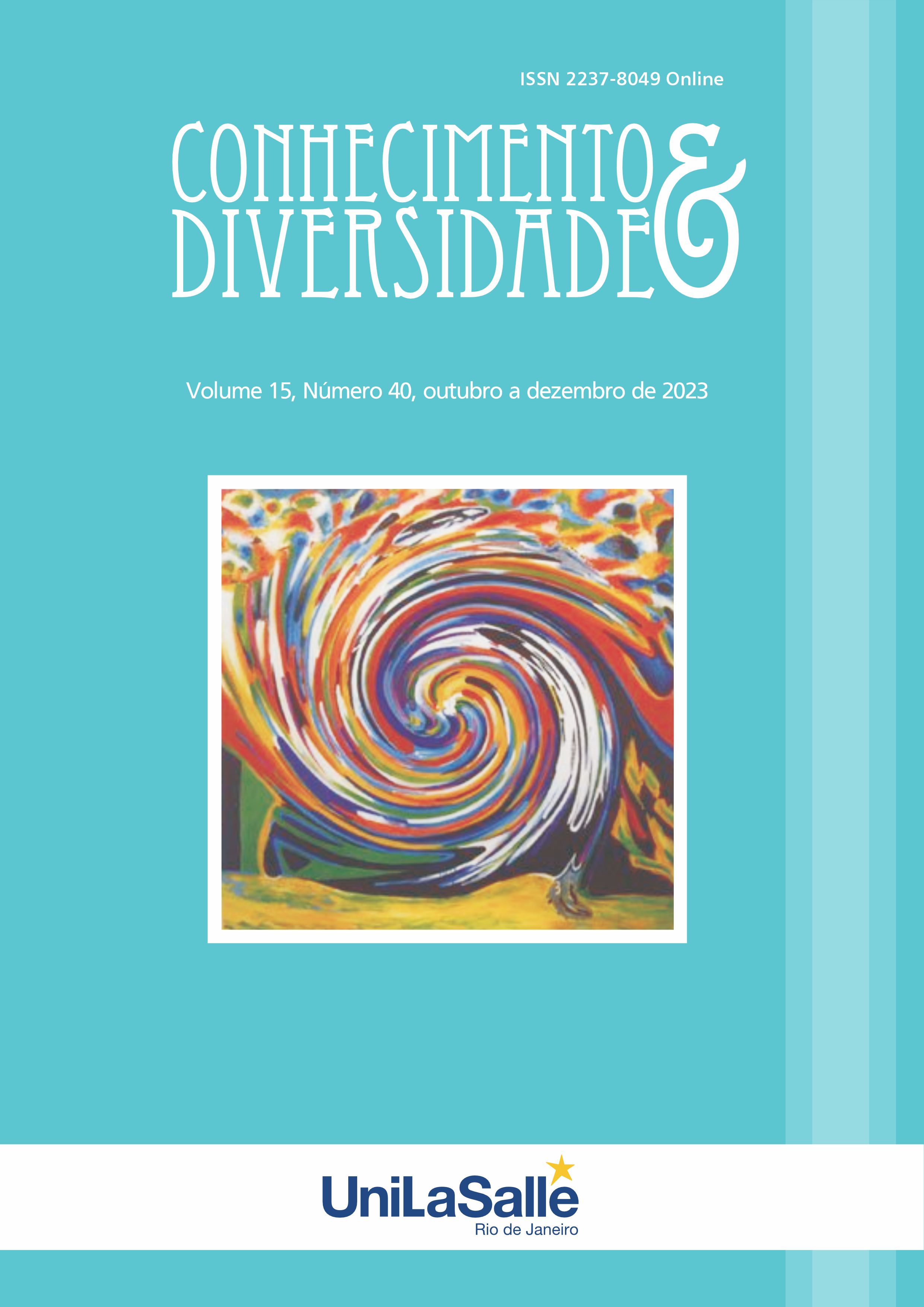SOCIOLINGUISTIC ASPECTS OF VERBAL INTERACTION
EXPLORING LANGUAGE COMMUNITIES AND SPEECH PRACTICES
DOI:
https://doi.org/10.18316/rcd.v15i40.11247Keywords:
Higher education, Innovation, Language community, Motivation, Sociolinguistics, Speech practiceAbstract
The study of language communities, where language practices are subordinated to social behavior and shaped by linguistic innovations and traditions, opens up a wide area for research in sociolinguistics. For this reason, focusing on and studying language communities and implementing language practices as a means of learning is relevant for linguistics. The study aims to establish the effectiveness of incorporating sociolinguistic achievements into the work with students in linguistics. In particular, it includes an investigation of the specifics of verbal interaction and studying the communicative behavior of language communities and speech practices. It involves an analysis of the effectiveness of involving students in the research process and innovating their motivation to study sociolinguistics. The research methodology is based on a comprehensive approach, utilizing observation, descriptive methods, analysis, and synthesis. The main method employed is an experiment. Also, an assessment of the implementation of the new methodology includes surveys conducted at the final stage. The main hypothesis of the study assumes that using sociolinguistic theories during research and educational work with students is an effective academic practice. Furthermore, applying the study of language communities and speech practice models is necessary for a specialist in linguistics. Further research would be promising to consider the experience of successful students' research projects, as well as studies of the linguistic aspects of social interaction within university educational practices. In particular, the process of preparing and implementing team projects in education is the key to ensuring a friendly environment for all participants of the educational process.
References
Ahlgren, K., & Rydell, M. (2020). Continuity and change. Migrants' experiences of adult language education in Sweden. European Journal for Research on the Education and Learning of Adults, 11(3), 399-414. Available at: http://doi.org/10.3384/rela.2000-7426.ojs1680.
Ahmad, F. (2019). Sociolinguistics in language teaching. MABASAN, 9(2), 66-77 Available at: http://doi.org/10.26499/mab.v9i2.159
Arbol del, E. (2018). Innovative Teaching Methods in Specialised Translation. Modern Journal of Language Teaching Methods, 8(12), 426-436. Available at: http://doi.org/10.26655/mjltm.2
Blommaert, J. (2010). The sociolinguistics of globalization. Cambridge University Press, 213.
Bruin, A., Treccani, B., Sala, S. (2016). Cognitive Advantage in Bilingualism An Example of Publication Bias? Psychological Science, 26(1), 99-107 Available at: http://doi.org/56797614557866.
De Meulder, M. & Murray, J. (2017). Buttering their bread on both sides? The recognition of sign languages and the aspirations of deaf communities. Language Problems & Language Planning, 41(2), 136-158. Available at: http://doi.org/10.1075/lplp.41.2.04dem
Fejes, A. (2017). Dahlstedt Popular education, migration and a discourse of inclusion. Studies in the Education of Adults, 49(2), 214-227. Available at: http://doi.org/10.1080/02660830.2018.1463656
Gasparri, L., & Murez, M. (2021). Hearing meanings: the revenge of context. Synthese, 198(6), 5229-5252.
Gilakjani, А. (2016). А review of EFL learners’ speaking skill and the strategies for improvement. Modern Journal of Language Teaching Methods (MJLTM), 6(9), 56-63. Available at: http://doi.org/10.26655/mjltm.2016.12.1
Goh, C. C. M., & Burns, A. (2012). Teaching speaking: A holistic approach. New York: Cambridge, 301 p.
Herk, Van G. (2015). Sociolinguistics. International Encyclopedia of the Social & Behavioral Sciences, 949-953. Available at: https://doi.org/10.1016/B978-0-08-097086-8.53081-5.
Jackendoff, R., & Jackendoff, R. S. (2002). Foundations of language: Brain, meaning, grammar, evolution. Oxford University Press, USA.
Ko, J., Sammons, P., Bakkum, L. (2013). Effective Teaching: a review of research and evidence. CfBT Education Trust. Available at: http://cdn.cfbt.com/~/media/cfbtcorporate/files/research/2013/reffective-teaching-2013.pdf
Köktürk, Ş. (2012). Forms and Multifunctionality of Interruptions and Simultaneous Speaking in Ordinary Talk – proposal of a Universal Model for the Evaluation of Interruptive Speech Sequences. International Journal of Linguistics, 4(3), 551-571. Available at: http://doi.org/10.5296/ijl.v4i3.2137U
Kostusiak, N., Shulska, N., Lisova, Y., Yaresko K., Ivanova, I., Pochuieva, O., Afanasieva, O. (2023). Language verbalization of quantitativeness in modern mass media: linguistic-cognitive and communicative-pragmatic dimensions in Ukrainian language. AD_ALTA Journal of interdisciplinary research,13(36), 149-155. Available at: http://www.magnanimitas.cz/13-01-xxxiv
Krausneker, V. (2015). Ideologies and attitudes towards sign languages: An approximation. Sign Language Studies, 15 (4), 411-431. Available at: http://doi.org/10.1353/sls.2015.0014
Leong, L.-M., Ahmadi, S. M. (2016). An Analysis of Factors Influencing Learners’ English-Speaking Skill. International Journal of Research in English Education, 2(1), 34-41. Available at: http://doi.org/10.18869/acadpub.ijree.2.1.34.
Milroy, L. and Gordon, M. (2003). Sociolinguistics: Method and Interpretation. Oxford: Blackwell. This provides methodological and theoretical details about social networks in sociolinguistics.
Napier, J., Leigh, G., & Nann, S. (2007). Teaching sign language to hearing parents of deaf children: An action research process. Deafness & Education International, 9(2), 83-100. Available at: http://doi.org/10.1179/146431507790560020
Núñez-Román, F., Gómez-Camacho, A., Hunt-Gómez, C. (2023). Gender-Inclusive Textisms: How Spanish-speaking educational communities promote linguistic innovations on Twitter. Linguistics and Education, 76. Available at: https://doi.org/10.1016/j.linged.2023.101191
Rydell, M. (2018). Being "a competent language user" in a world of Others. Adult migrants’ perceptions and constructions of communicative competence. Linguistics and Education, 45, 101-109. Available at: http://doi.org/10.1016/j.linged.2018.04.004
Shu, X. (2019). Sociolinguistics in Language Learning and Language Teaching. Open Access Library Journal, 6, 1-5. Available at: http://doi.org/10.4236/oalib.1105650
Swanwick, R., Fobi, J., & Appau, O. (2022). The multilingual context of the early care and support of deaf children in Ghana”. Journal of Multilingual and Multicultural Development, 1-14. Available at: http://doi.org/10.1080/01434632.2022.2116028
Zschomler, S. (2019). Language Is Your Dignity: Migration, Linguistic Capital, and the Experience of Re/De-Valuation. Languages, 4(3), 64. Available at: http://doi.org/10.3390/languages4030064
Downloads
Published
Issue
Section
License
Copyright (c) 2023 Hanna Vusyk, Tetiana Kuzmenko, Olha Dekalo, Lyudmyla Kruhlenko, Oleksandr Iievliev

This work is licensed under a Creative Commons Attribution 4.0 International License.
As recommended by the Public Knowledge Project, RCD adopts for its articles a CREATIVE COMMONS Attribution CC BY 4.0 license.
This license allows others to distribute, remix, adapt and build upon your work, even commercially, as long as they credit you for the original creation.
This is the most appropriate license offered.
Recommended for maximum dissemination and use of licensed materials.



